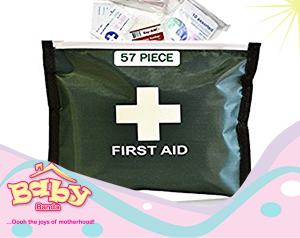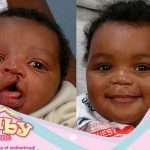No matter how careful you’re as a parent, it’s impossible to protect your child from cuts and scrapes. Children are naturally adventurous and playful, and they don’t stop to think of the danger ahead. Hence, they keep falling down and injuring themselves.
That’s why you should know how to administer first aid for cuts and wounds since you don’t need to go to the hospital every time.

First aid care
- Wash your hands with soap and water to avoid spreading germs to the baby.
- The next step is to stop the bleeding. Small bruises don’t bleed for long, provided you apply some pressure. So, press the site firmly with clean cloth for at least fifteen minutes.
- Once your child is not bleeding anymore, clean the cut under lukewarm running water and pat dry. Running water decreases the chances of infection.
- If the wound is dirty, clean the area around it with soap but don’t get soap on the wound. Then rinse thoroughly, and dry with a clean cloth.
- The next step is to apply an antiseptic cream to the injured area. A thin coat of the antibiotic will keep the place moist.
- Finally, cover with a bandage or gauze. You may skip this part if you feel that the cut or scrape is too small. Your baby should be okay in a few days.
- If the wound appears to be forming and draining pus or swelling, see a doctor immediately.
- However, when you realize that you cannot control the bleeding, kindly take the child to the emergency room.
- Also, if it’s an animal bite that has caused a deep cut, seek medical advice at the nearest health center.
Splinter, glass, or insect sting
What should you do in case of an insect sting, a splinter, or glass cut?
- Wash the injured part with soap and water. Remember to do this with clean hands.
- Clean your tweezers with the surgical spirit, then use them to pull the splinter out.
- Clean the area again.
- If the piece of wood or glass is hard to remove, you can leave it for a day and see whether it will come out on its own.
- Kindly consult with your doctor to know whether the little one will need a tetanus injection.
- In case of a sting, scrape the skin with your fingernail or an ATM card to remove the sting.
- Then apply a thin coat of petroleum jelly to the affected area.
- Finally, watch out for signs of bee sting allergy, e.g., wheezing, difficulty breathing, hoarse voice, and hives.
- If you notice an allergic reaction, seek immediate medical attention immediately.
Conclusion
You should keep a well-equipped first aid kit in the house, especially when raising children. The kit should have assorted bandages, sterile gloves, petroleum jelly, antiseptic, pain killers, allergy medicine, and safety pins.
Also, take time to educate the older children on how to treat cuts and scrapes so that they can administer first aid in your absence.













